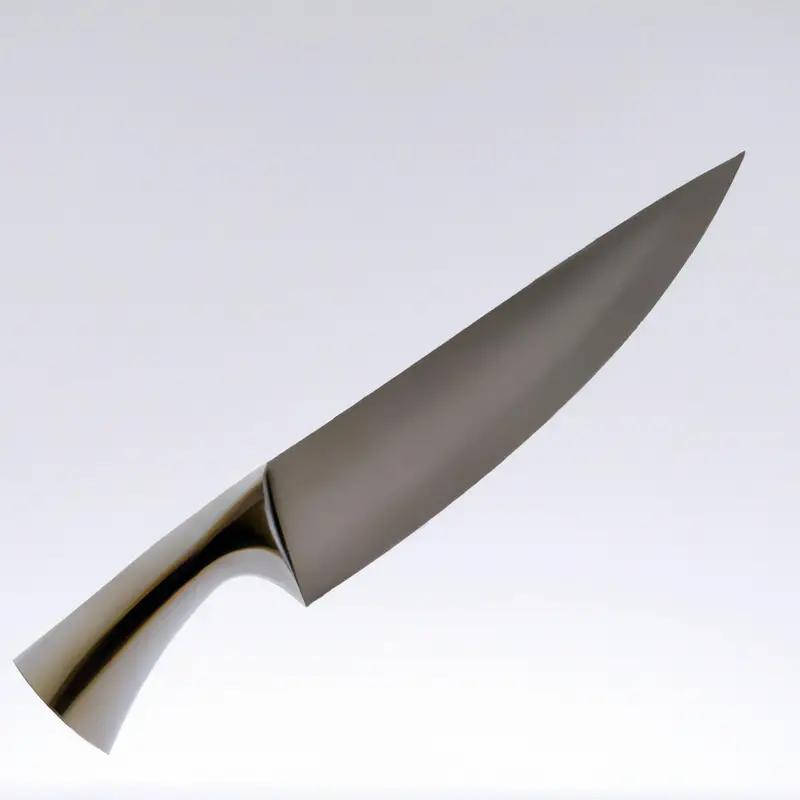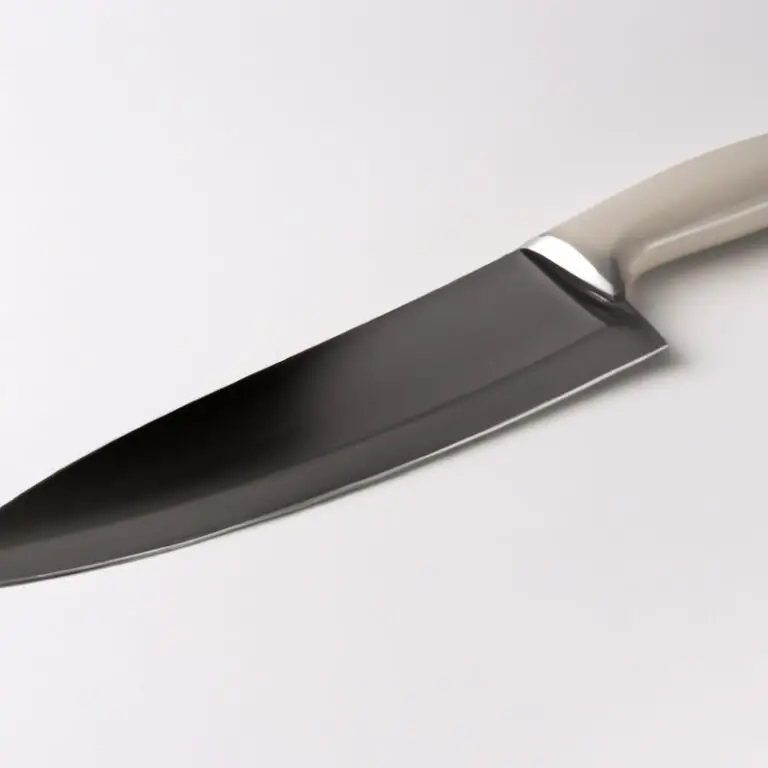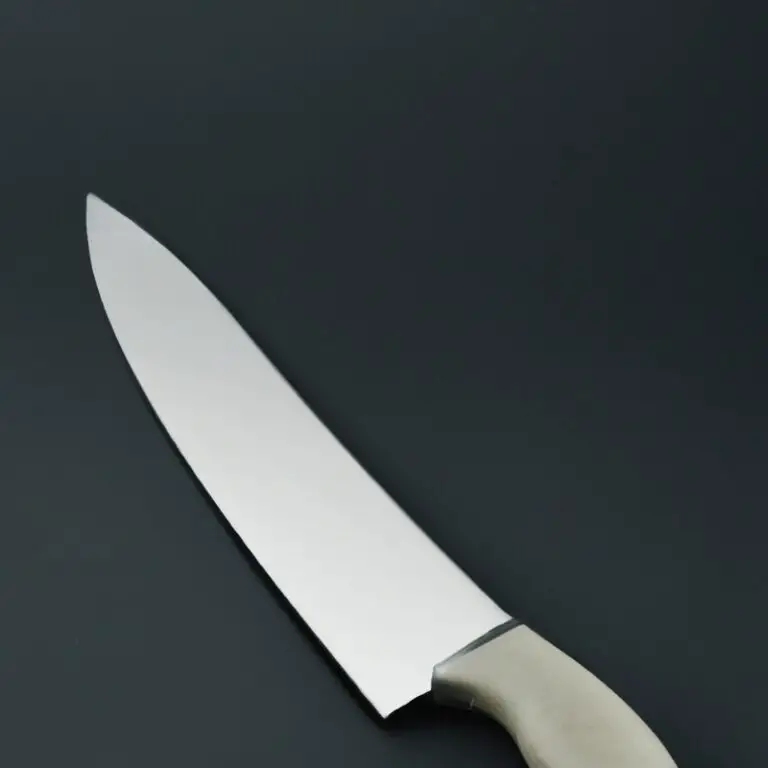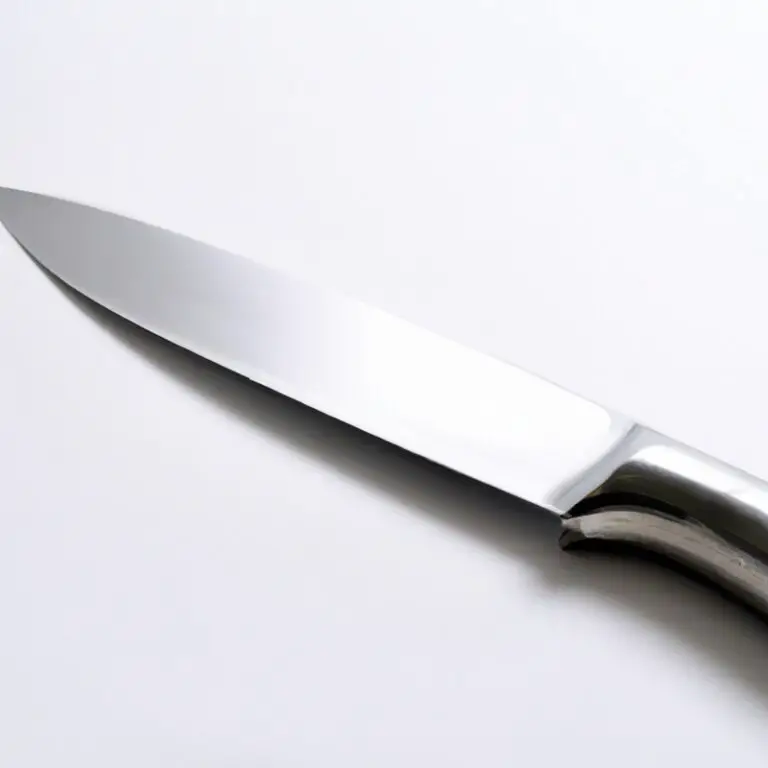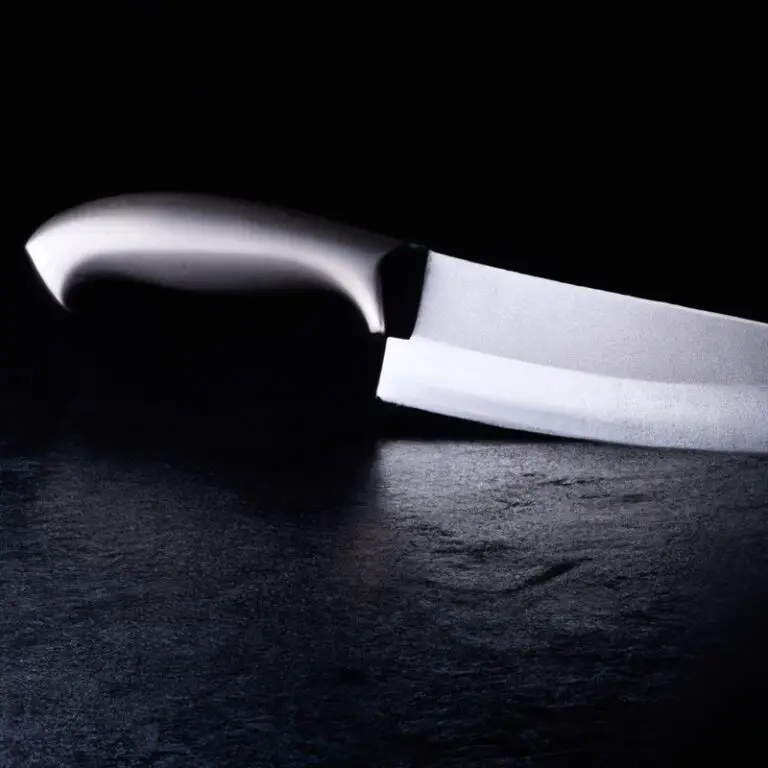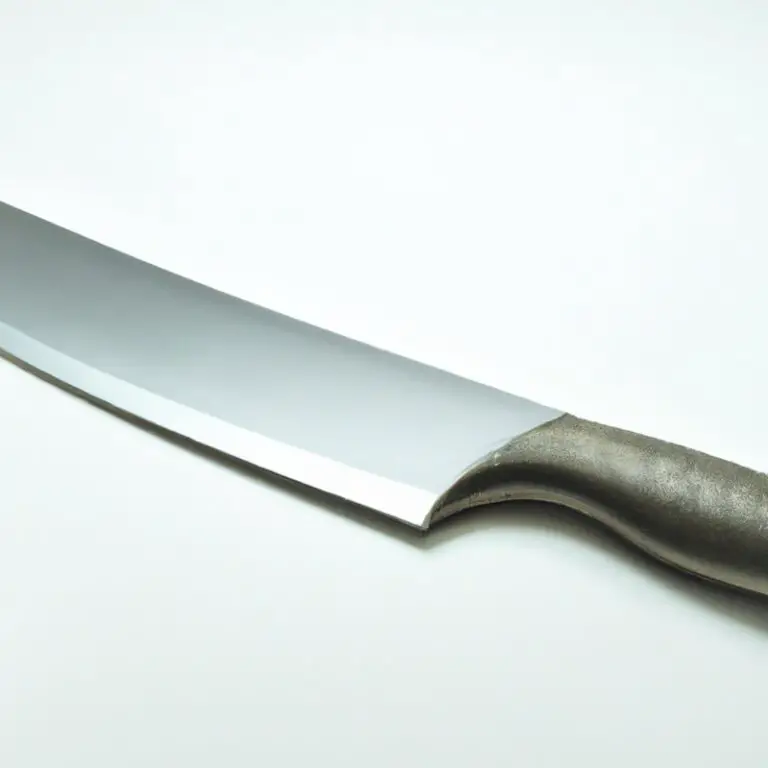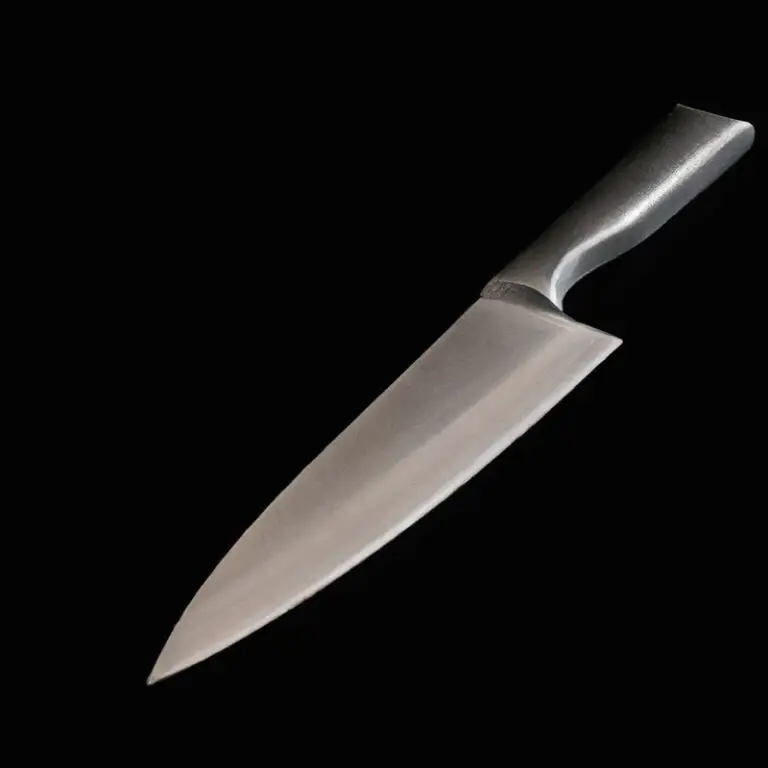Choosing The Right Cutting Board For a Santoku Knife: Tips And Tricks
Key Takeaways:
- The material of the cutting board matters for a Santoku knife to avoid dulling the blade.
- Wooden and bamboo cutting boards are recommended for Santoku knives as they are gentle on the blade.
- Plastic cutting boards should be avoided as they cause excessive wear and tear on the knife edge.
- Regular maintenance of the cutting board and knife edge will ensure longevity and optimal performance.
A great chef knows that the key to perfecting a recipe lies not only in the ingredients but also in the tools. And when it comes to Japanese cuisine, a Santoku knife is an essential tool.
However, selecting the right cutting board is equally important to maximize the potential of this versatile knife.
With an array of materials to choose from, including wood, bamboo, plastic, and glass, it can be challenging to determine the best fit. Fortunately, we’re here to guide you on the path to culinary success with our expert insights and tips on choosing the appropriate cutting board for your Santoku knife.
| Material | Pros | Cons |
|---|---|---|
| Bamboo | Lightweight, durable, and eco-friendly. Absorbs shock and is gentle on knife blades. Affordable. | May contain glue or chemicals that can be harmful. Susceptible to cracking and warping if not properly maintained. Not dishwasher safe. |
| Plastic | Easy to clean and maintain. Affordable. Lightweight. Comes in different colors for food safety. | Prone to scratches and knife marks, which can become a breeding ground for bacteria. Shorter lifespan than other materials. Can dull knife blades quickly. Not eco-friendly. |
| Wood | Has natural antimicrobial properties that can kill bacteria. Gently on knife blades. Can be refinished and last a long time. Looks great as a serving platter for cheese and charcuterie. | Can be expensive. Prone to warping if not maintained properly. Requires regular oiling and upkeep. Not dishwasher safe. |
| Composite | Made from high-density polyethylene or other synthetic materials that are durable and hygienic. Resistant to scratches and marks. Dishwasher safe. | Expensive. Not eco-friendly. Can be hard on knife blades. |
Understanding the Santoku knife: The importance of a suitable cutting board
Choosing the right cutting board is crucial when working with a Santoku knife. This type of knife features a thin, sharp blade that requires a stable surface for precise cutting.
An unsuitable cutting board can damage or dull the blade, compromising the knife’s effectiveness over time.
Therefore, it is essential to select a cutting board that complements the Santoku knife’s design and ensures a comfortable cutting experience. A suitable cutting board should be made of hard materials, such as wood, bamboo, or plastic, that won’t dull the blade.
Glass cutting boards should be avoided because they can damage the edge of the knife quickly.
Additionally, keeping your cutting board clean, maintaining its size and thickness, and following hygiene practices can prolong the longevity and effectiveness of your Santoku knife. Understanding the importance of a suitable cutting board can positively impact your cutting experience and ensure the longevity of your Santoku knife.
Types of cutting boards: Choosing the best material for your Santoku knife
There are various types of cutting boards available on the market, and selecting the right one for your Santoku knife can make a huge difference in your cooking experience. The following are some different materials for cutting boards and their pros and cons when it comes to using Santoku knives:
- Wood cutting boards: They are natural and gentle on the knife edges, but they require more maintenance than other materials.
- Bamboo cutting boards: They are eco-friendly and affordable but not ideal for a Santoku knife as they tend to be too hard for the blade.
- Plastic cutting boards: They are easy to clean and low maintenance, but they can harbor bacteria and don’t have the same aesthetic appeal as other materials.
- Glass cutting boards: They may look attractive, but they are too hard for the knife edge, making them unsuitable for Santoku knives.
When picking a cutting board for your Santoku knife, consider factors such as maintenance, hygiene, and durability. The choice of the material is crucial to ensure a longer lifespan for both your knife and cutting board.
Wood cutting boards: Pros and cons for Santoku knives
Wood cutting boards have both pros and cons when it comes to using them with Santoku knives. On the one hand, wood is a relatively soft material that won’t dull the blade as quickly as some harder materials, such as glass or stone.
Additionally, wood cutting boards have natural antibacterial properties that can help prevent the growth of harmful bacteria on the surface.
However, there are also some drawbacks to using wood cutting boards with Santoku knives. Because wood can be porous, it can absorb moisture and become a breeding ground for bacteria if not properly cleaned and maintained.
Additionally, wood is not as durable as some other materials and may need to be replaced more frequently if it becomes badly scratched or gouged.
Overall, wood cutting boards can be a good choice for use with Santoku knives, but it’s important to choose a high-quality board that is made from a dense, hard wood such as maple or teak, and to take care to clean and maintain it properly to ensure safe and effective use over time.
Bamboo cutting boards: Are they ideal for Santoku knives?
Bamboo cutting boards are a popular choice for many home cooks. However, when it comes to using them with a Santoku knife, there are some factors to consider.
On the positive side, bamboo cutting boards are durable and affordable.
They are also naturally antimicrobial, which means they resist the growth of bacteria better than some other materials. However, bamboo is a relatively hard material, which means it can dull Santoku knives more quickly than softer materials like wood.
Additionally, bamboo cutting boards often have a harder surface and less give than other materials, which can be tough on a sharp Santoku knife blade.
While bamboo cutting boards are not the ideal choice for Santoku knives, they can work well if you take proper care of your knife blades. Try to choose a bamboo board that is not too hard, or consider using a softer wood board for your Santoku knife instead.
Remember to always sharpen your knife blade regularly, regardless of the type of cutting board you are using.
Plastic cutting boards: Are they a good choice for Santoku knives?
Plastic cutting boards are a good choice for Santoku knives because they are affordable and easy to maintain. However, they are not as durable as wood or bamboo cutting boards.
Also, plastic cutting boards tend to develop deep grooves over time, which can harbor bacteria and affect the efficiency of the Santoku knife.
It is recommended to replace plastic cutting boards every two years. To keep plastic cutting boards clean, wash them with soap and hot water after every use and sanitize them with a 10% bleach solution every few weeks.
It is also essential to use a non-slip mat or towel underneath the plastic cutting board to prevent it from sliding around, which can cause accidents and affect the precision of the Santoku knife.
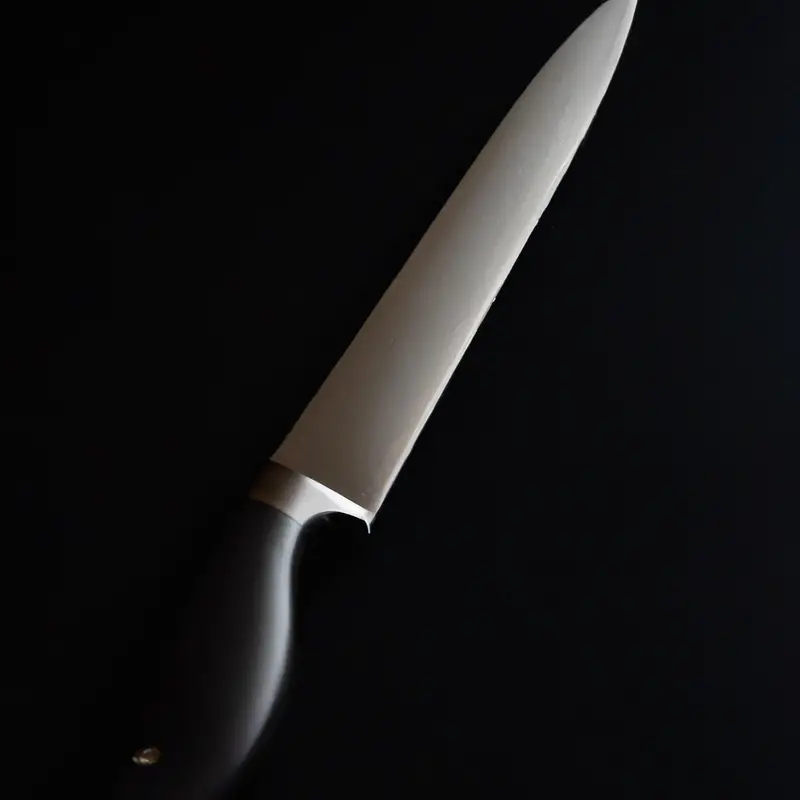
Glass cutting boards: The do’s and don’ts when using a Santoku knife
When it comes to using a Santoku knife, glass cutting boards may not be the best choice. The hard surface of the glass can dull the blade more quickly than other materials.
However, if you prefer using a glass cutting board, there are a few things you should keep in mind: DO:
- Use a tempered glass cutting board, as they are less likely to shatter or crack during use.
- Place a damp towel or silicone mat underneath the cutting board to prevent slipping.
- Be gentle when cutting to avoid chipping or cracking the glass.
- Clean the cutting board thoroughly after each use to prevent bacteria growth.
DON’T:
- Use a regular glass cutting board or any glass surface that is not specifically made for cutting.
- Chop or cut aggressively, as it can cause damage to both the blade and the cutting board.
- Put the glass cutting board in the dishwasher or use abrasive cleaners, as it can damage the surface.
Maintenance and care of your cutting board: Tips for prolonged use with Santoku knives
To prolong the lifespan of your cutting board and ensure a safe and efficient cutting experience with your Santoku knife, regular maintenance and care are crucial. Here are some tips to keep in mind:
- Always clean your cutting board with hot, soapy water after every use.
- Dry your cutting board thoroughly with a clean cloth or paper towel before storing it.
- Avoid exposing your cutting board to extreme temperatures or direct sunlight.
- Refrain from soaking your cutting board in water or putting it in the dishwasher, as this can cause warping and cracking.
- Treat your wooden cutting board with food-grade mineral oil periodically to prevent it from drying out and cracking.
- Use separate cutting boards for meat, poultry, fish, and vegetables to prevent cross-contamination.
By following these simple maintenance and care tips, you can enjoy extended use of your cutting board and a safer, more efficient cutting experience with your Santoku knife.
Size and thickness of your cutting board: Why it matters for Santoku knives
Size and thickness of your cutting board are essential when it comes to using a santoku knife. A cutting board that is too small can cause instability, which could result in accidents.
It is recommended to choose a cutting board that is at least 15 inches long and 10 inches wide.
Additionally, a thick cutting board can help absorb the shock of chopping and cutting, which can prolong the lifespan of your knife. Choosing a cutting board that is at least 1 inch thick is ideal.
Overall, a suitable size and thickness of your cutting board will ensure safe and efficient use of your santoku knife.
Cutting board hygiene: Keeping your cutting board clean for safe use with Santoku knives
To ensure safe use with Santoku knives, it is crucial to maintain proper cutting board hygiene. First, always wash your cutting board with hot, soapy water after each use.
Rinse thoroughly and dry with a clean towel.
Next, sanitize the board using either a solution of one tablespoon of bleach per gallon of water or a mixture of equal parts water and white vinegar. Allow the solution to sit on the board for a few minutes before rinsing and drying again.
It is recommended to sanitize your cutting board at least once a day if you use it frequently.
Additionally, avoid cross-contamination by using separate cutting boards for different types of food, such as raw meat and vegetables. Finally, inspect your cutting board regularly for deep grooves or cracks and replace it if it becomes too worn.
By following these hygiene tips, you can ensure safe and efficient usage of your Santoku knife.
Choosing the right cutting board for your Santoku knife: Factors to consider
When selecting a cutting board for your Santoku knife, there are a few factors to consider. First, choose a cutting board made of a durable and sturdy material that won’t damage or dull your blade.
Some popular materials include wood, bamboo, plastic, and glass.
Consider the size and thickness of the board, as a larger and thicker board may offer more stability and support during cutting tasks. It’s also important to maintain and clean your cutting board regularly to prevent bacterial growth and contamination.
Finally, consult the manufacturer’s instructions for specific care guidelines for your particular knife and cutting board materials.
By selecting the right cutting board for your Santoku knife and taking good care of it, you can ensure that your knife will retain its sharpness and perform at its best.
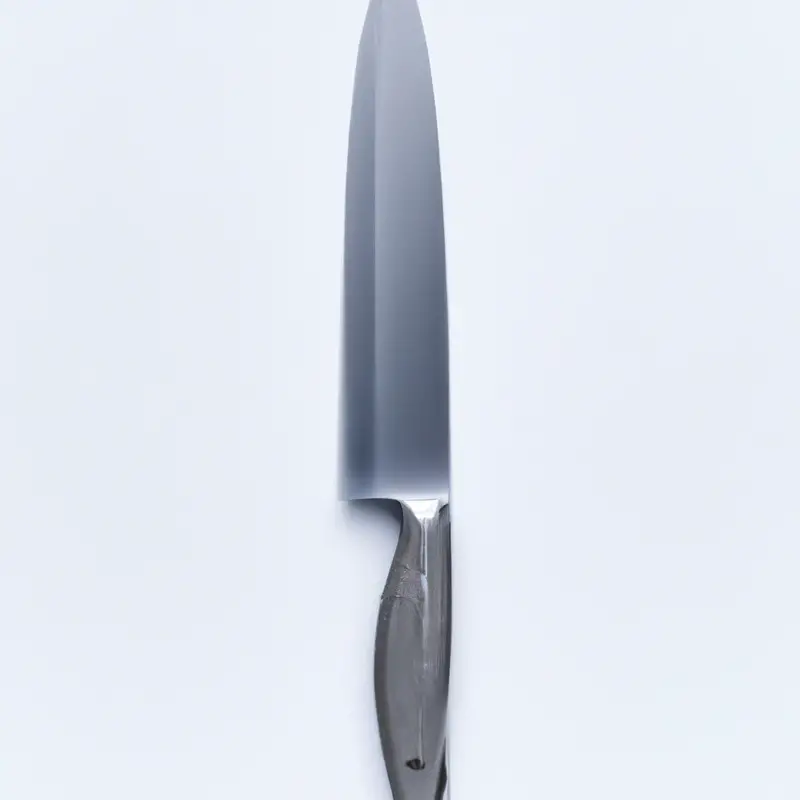
Final Verdict
Choosing the right cutting board for your Santoku knife is a crucial step towards achieving precision, efficiency and safety in your meal preparations. With the right material, size, thickness and hygiene practices, you can prolong the lifespan of both your knife and cutting board while also elevating your cooking experience.
Remember to consider the factors discussed in this article while also testing out different options to find what works best for you and your Santoku knife.
By following these guidelines, you can ensure that your cutting board and Santoku knife work harmoniously to produce exceptional results every time. Trust in the information presented here, and feel confident in your ability to make an informed decision when choosing the perfect cutting board for your Santoku knife.

